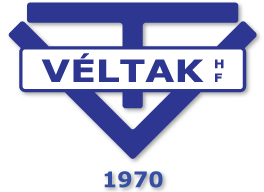To Véltak ehf Vessel : Ásbjörn RE-50
Main engine : Stork Werkspoor 1450 KW
Owners : HBGrandi H.F. Reykjavík,Iceland.
Chief engineer : Sigurður Rúnar Sigurðsson
I, the undersigned, have here made for Véltak ehf, the following report on OGS-2 lub. oil/gas/ separator, and our experience with it since March 2011, when the centrifuge was taken in use
Date |
Days at sea |
Lub. oil purchase barrels |
Consumption litres/day |
||
2010 |
31.12.2010 |
210,6 |
60 |
53,1 |
|
2011 |
31.12.2011 |
183 |
39 |
38,1 |
|
2012 |
11.9.2012 |
162,8 |
31 |
32,6 |
Figure 1.
Oil consumption before OGS-2 53,1 l/24
Oil consumption after OGS-2 32.6 l/24
Reduction 20,5 litres 38,6%
32.6 x 1,628834356 = 53,1 l /24 ( all oil consumption is calculated by data fed computer)
As can be seen from fig. 1, there has been noticeable change in oil consumption subsequent to OGS-2 being taken into use, (installed in March 2011) or 38,6% less oil consumption
After OGS-2 had been taken into use, it was noticed that, the quality of the atmosphere in the engine room had become better and oil odour had diminished considerably, to-day this constant oil stench cannot be felt as before.
Previously there were leaks and oil oozing various places on the main engine, especially in way of valve covers, flywheel, pump-gear and other places. This resulted in oil contaminated atmosphere in the engine room and all equipment in the engine room, notably generators, electrical motors, bulkheads, ceilings etc. were covered with oil film. There has been a great change in this concern.
Ventilation from crankcase up to deck and the landing there below was previously covered with oil scum, but to-day this is completely clean, since the crankcase extraction of oil mist is taken through OGS-2.
The turbine and the scavenge air cooler are thought to be cleaner since air quality has become considerably better, this is not fully investigated, however there are indications that this is so.
A piston was drawn at the same time as OGS-2 was fitted, survey indicated that, lacquering inside the cylinder liner was beginning to be formed; previously we had inspected the whole engine through fuel valve holes with a visio-scope and thus had noted lacquering in all liners.
Last spring we had to remove a cylinder cover due to cooling water leakage, lacquering in the liner was then less than might have been expected and that could be an indication that formation of lacquering is being reduced through use of OGS-2 and furthermore that, pre-OGS-2 formed lacquering appears to wear off.
In general the overall experience of OGS-2 is very good and I can certify that this is equipment which is really beneficiary to the engine and environment.
-
Lubrication oil consumption is reduced
-
Atmosphere improves considerably
-
Working clothes and engineers do not smell oil any more
-
Engine room is cleaner and use of cleansing materials is reduced
-
Indications are that, lacquering in liners diminishes when using OGS-2
-
Combustion blow-down in cylinders can be checked (frequency based computer data)
-
Crankcase ventilation up to deck (no longer oil scum pollution)
-
Possible to separate water which has contaminated the lubrication oil
-
OGS-2 has fully automatic control
-
Health protection for the engineers
-
Maintenance free and no breakdowns
-
Less oil scum in engine room bilges to be removed and taken ashore









